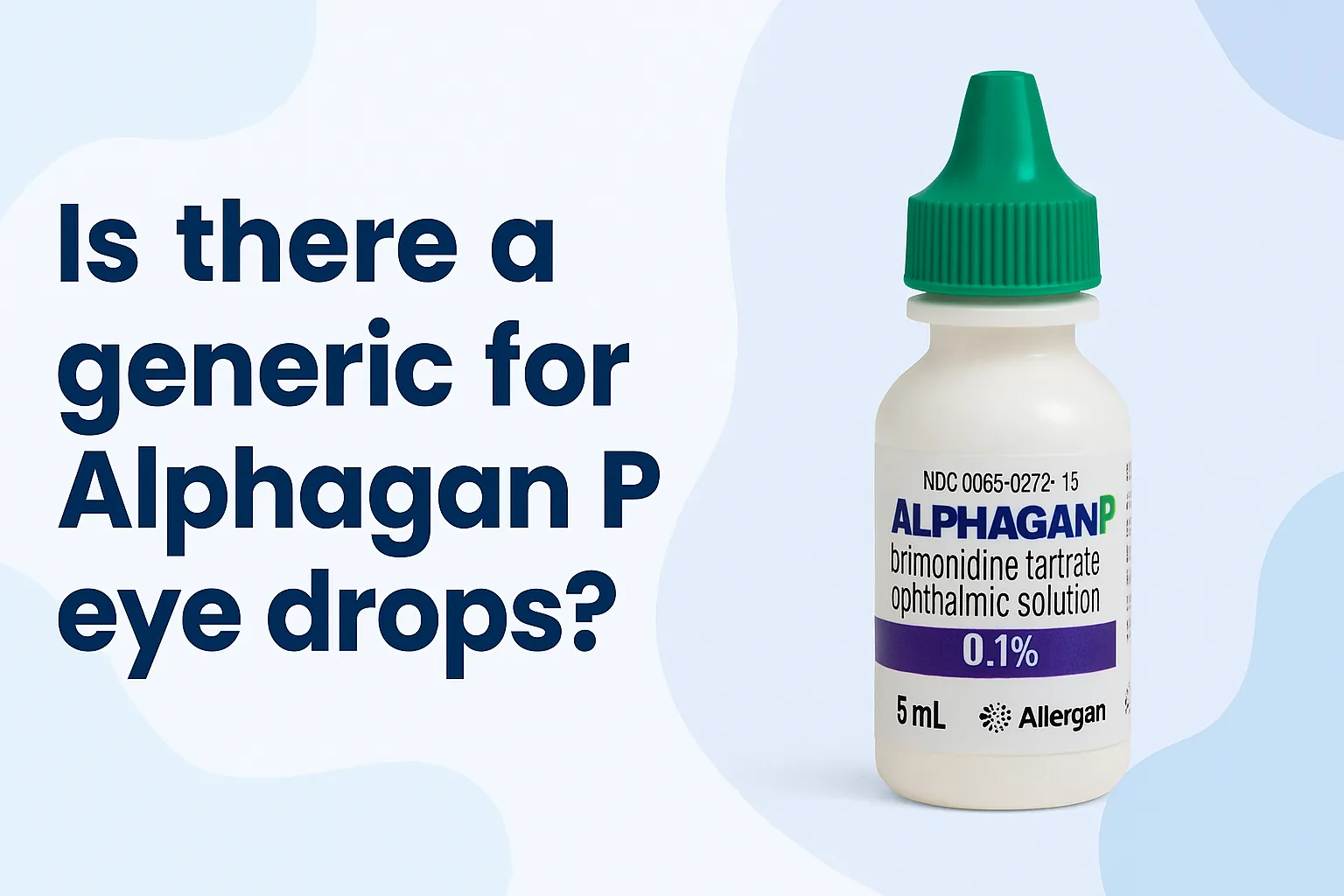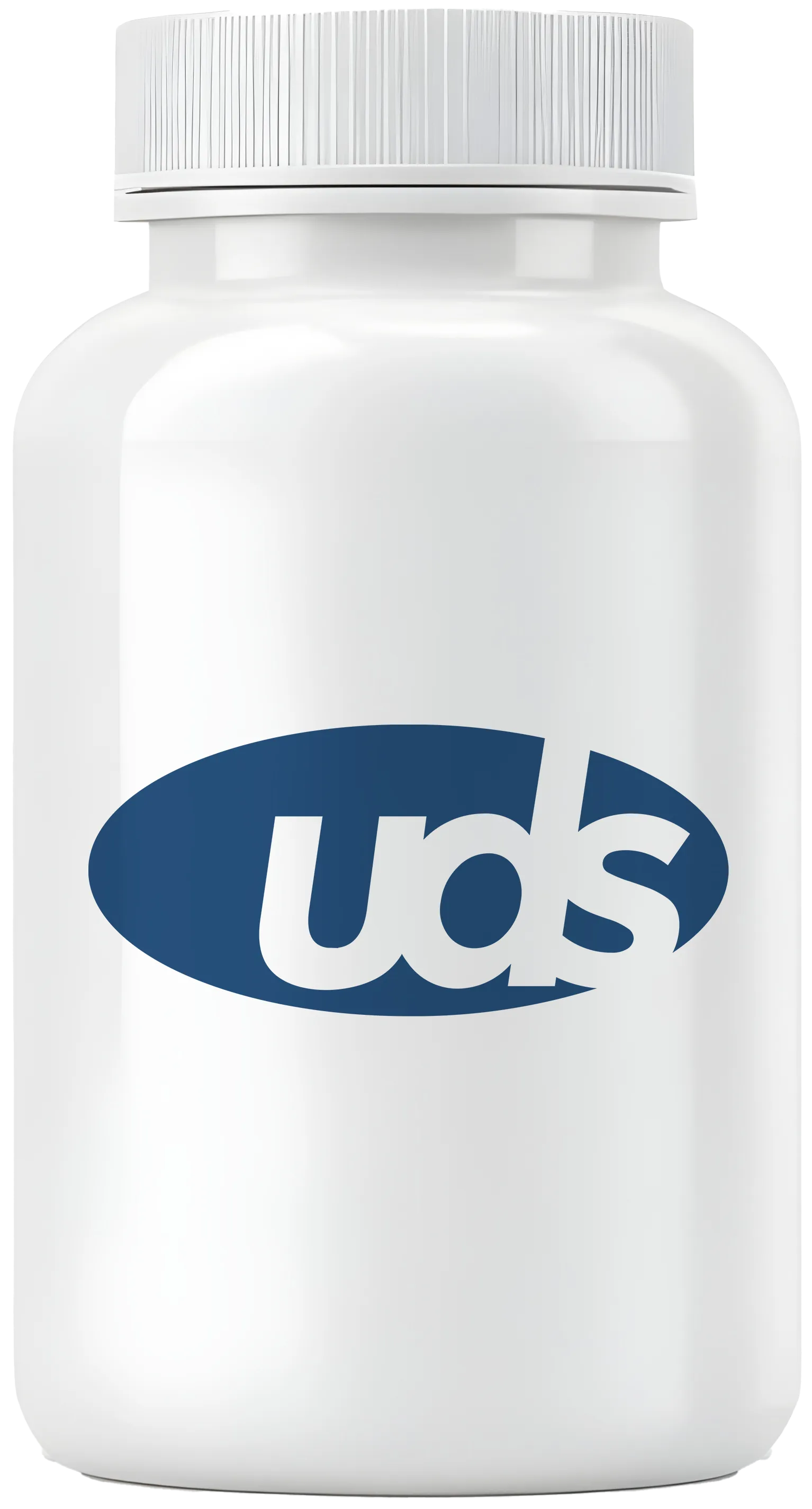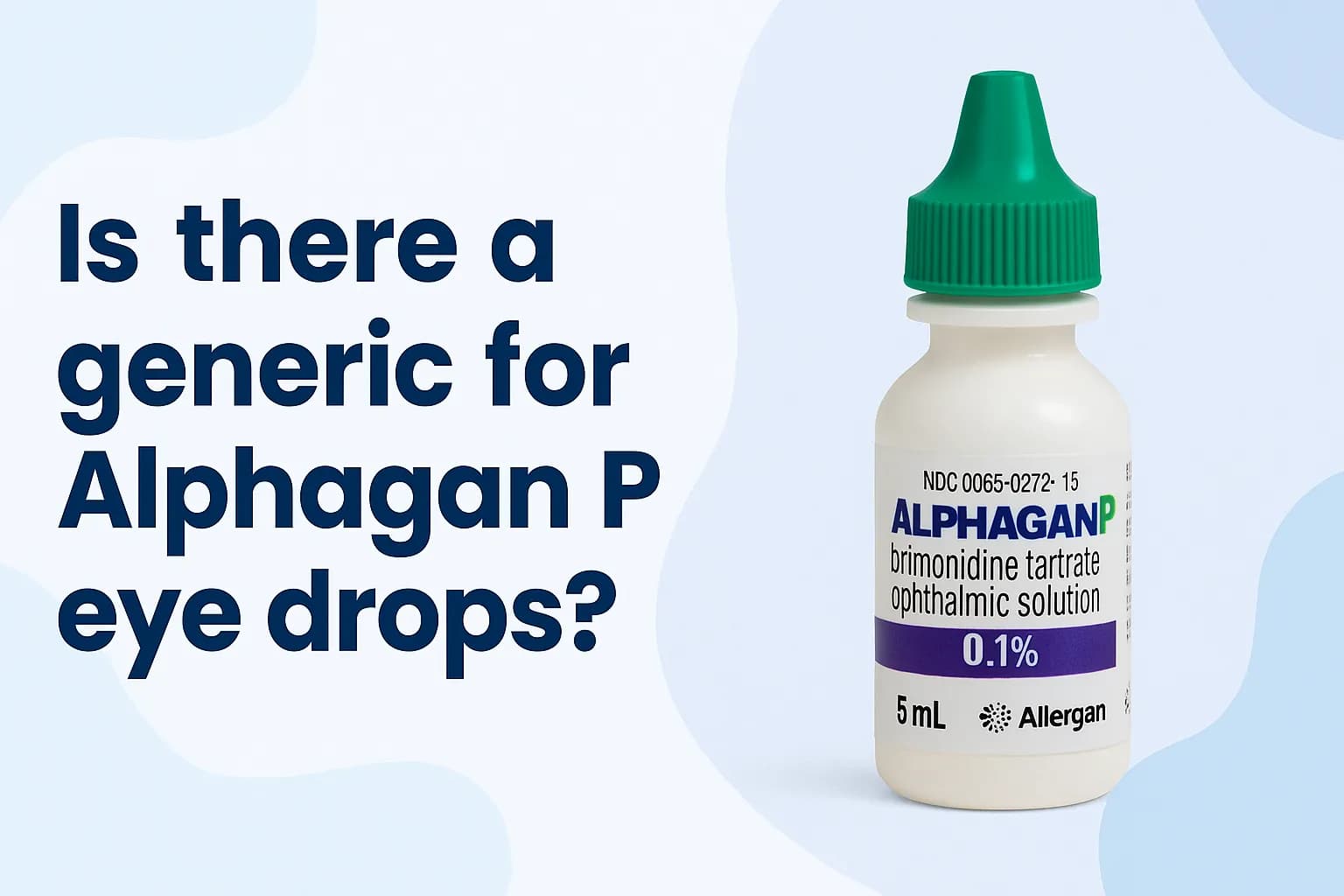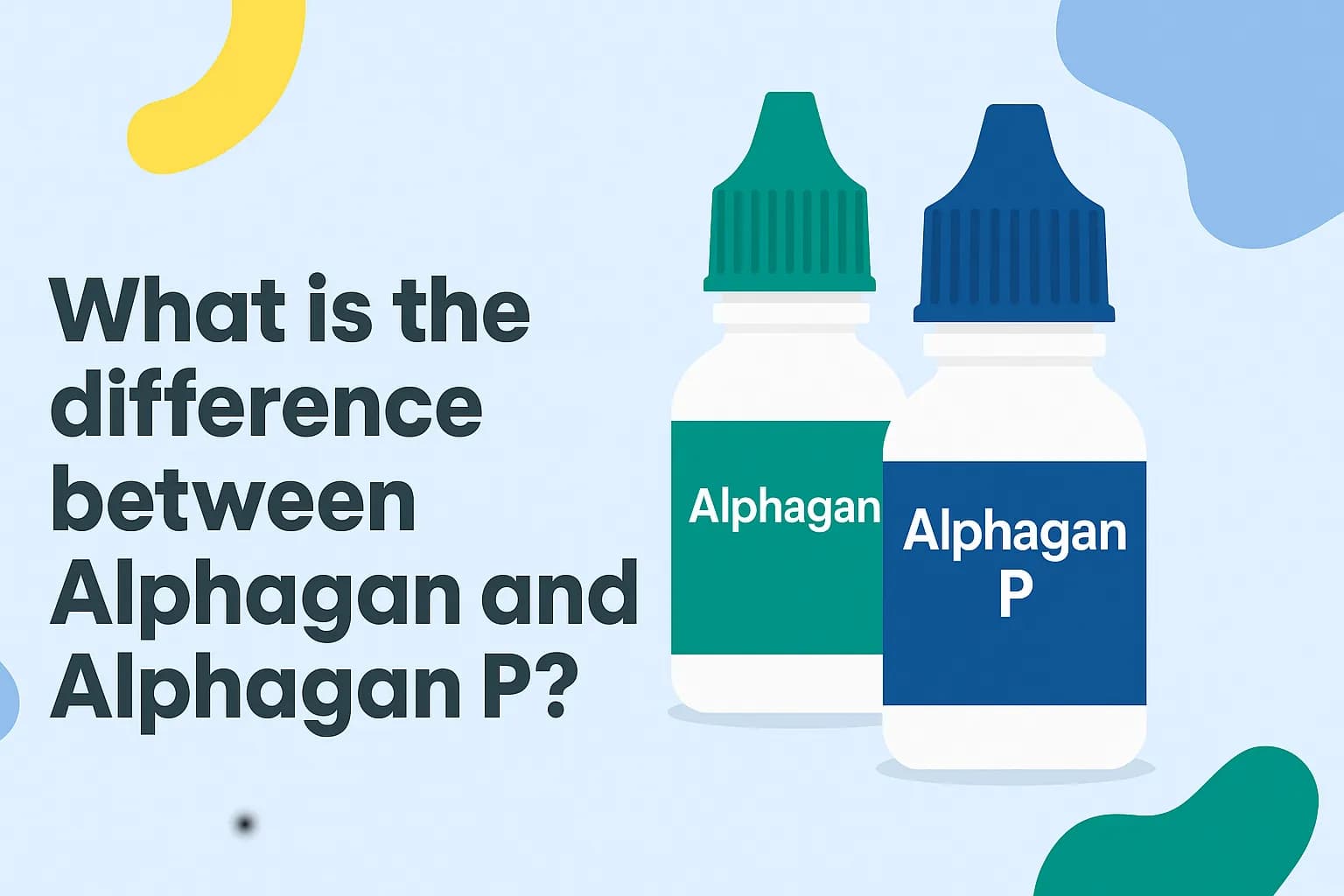Is there a generic for Alphagan P eye drops?

In March 2001, Allergan, Inc. was approved by the FDA for their new eye drop, Alphagan P (brimonidine 0.15%), which is used to treat open-angle glaucoma and ocular hypertension. It was thought to improve an earlier version called Alphagan 0.2% because it contained a different, safer preservative. Then in August 2005, Allergan, Inc. got approval for a lower-strength version of Alphagan P (0.1%) to treat the same conditions.
The first generic version of Alphagan P was approved in January 2022 by the FDA which allowed Apotex to bring their formulation of brimonidine 0.15% to the US market. Since then, generic versions of the Alphagan P 0.1% have also been approved and are available as well.
The FDA sets standards for generic medications to make sure they work the same way and have the same benefits and risks as their brand-name versions. Studies comparing brand name and generic drugs found on average only a 3.5% difference in absorption into the body.
Generic medications must match the brand-name versions by:
- Having the same active ingredients.
- Their dosage and strength being identical.
- Having the same safety and stability.
The main differences between generic and brand-name medications are:
- The inactive ingredients, such as preservatives.
- Generics typically cost less than their brand-name versions.
Always talk to your healthcare provider about the best course of your treatment. Although not in this case, some medications do not have a generic version, but your healthcare provider can see if any alternatives may be right for you. You may find the savings are well worth the change.
Alphagan P FAQs
What is Alphagan P used to treat?
Alphagan P is a brand-name brimonidine ophthalmic solution that is FDA-approved to reduce elevated intraocular pressure (IOP) in patients with open-angle glaucoma or ocular hypertension. It can be used in patients 2 years of age and older.
How does Alphagan P work?
Alphagan P contains the active ingredient brimonidine tartrate. It belongs to a drug class called alpha agonists. Alphagan P works by lowering the amount of fluid in your eye. When there is less fluid inside the eye, your eye pressure goes down.
What dosage forms are Alphagan P available in?
Alphagan P is available as a topical ophthalmic solution in the following strengths:
- 0.1%
- 0.15%
What is the usual dose of Alphagan P?
It is important to follow your healthcare provider’s instructions on how to use Alphagan P the right way. The usual recommended dosage of Alphagan P is to place 1 drop in the affected eye(s) 3 times a day about 8 hours apart.
What are the side effects of Alphagan P?
While Alphagan P is generally well-tolerated, like any medication, it can cause side effects. The most common side effects of Alphagan P seen in clinical trials include:
- Dry mouth
- Red eyes
- Eye irritation, burning, and stinging
- Eye pain
- Headache
- Blurred vision
- Feeling like there’s something in your eye
- Drowsiness or tiredness
- Small white patches on the inside of the eyelids
- Dry or itchy eyes
Other side effects seen with Alphagan P include:
- Color change to or thinning of the cornea
- Light sensitivity
- Tearing
- Flu-like symptoms
- Dizziness
- Eyelid inflammation
- Upset stomach
- Weakness
- Pale or white eyelids
- Vision changes
- Muscle pain
- Slow, fast, or irregular heartbeat
While less common, some individuals may experience serious side effects while using Alphagan P. These side effects may require immediate medical attention. If you experience any of the following, contact your healthcare provider or seek emergency medical assistance:
- Severe allergic reactions, which can be life-threatening. Symptoms can include:
- Hives
- Trouble breathing
- Swelling of the mouth, throat, and tongue
- Low blood pressure, especially upon standing (orthostatic hypotension)
Shop Medications
Alphagan P should be used with caution if you have severe cardiovascular disease, blood vessel problems (thromboangiitis obliterans), Raynaud’s phenomenon, or cerebral or coronary insufficiency (low blood flow to your heart or brain).
Increased risk of infections from contamination
Alphagan P can cause bacterial keratitis, a bacterial infection of the cornea (the protective covering on the front of your eye) if the dropper gets contaminated. It is important to wash your hands before each use and be careful not to touch the tip of the dropper with your eye, hands, or any other surface.
Damage to soft contact lenses
If you wear soft contacts, remove them before using Alphagan P. You should wait at least 15 minutes after using this medication before putting your contacts back in.
These are not all of the possible side effects of Alphagan P. You should always seek medical advice from your healthcare provider for any questions or concerns about your medical condition or treatment. Read all patient information, medication guides, or drug information sheets that come with this medication. You can also report adverse effects to the FDA at www.fda.gov/medwatch or 1-800-FDA-1088.
Can I take Alphagan P eye drops with other drugs?
Alphagan P may interact with other medications, supplements, or foods, potentially affecting its effectiveness or increasing the risk of side effects. It is important to inform your healthcare professional about all the medications, including prescription drugs, over-the-counter (OTC) drugs, vitamins, and supplements you are taking, including:
- Use with blood pressure-lowering medications such as clonidine and cardiac glycosides such as digoxin may cause a significant drop in your blood pressure.
- Use with beta-blockers such as atenolol or timolol eye drops can also increase your risk of low blood pressure.
- Use with CNS depressants (alcohol, barbiturates, opiates, or sedatives) may cause increased drowsiness.
- Use with tricyclic antidepressants such as amitriptyline may decrease the effectiveness of Alphagan P.
- Use with monoamine oxidase inhibitors such as selegiline and tranylcypromine may result in low blood pressure.
Who should not take Alphagan P?
Alphagan P is contraindicated if you have a known allergy to brimonidine, the preservative Purite, or any other inactive ingredients in this product.
You should also make sure your healthcare provider is aware of your medical conditions before you start taking Alphagan P, including:
- Those associated with vascular insufficiency such as depression, Raynaud’s phenomenon, orthostatic hypotension, low blood flow to your heart or brain, or thromboangiitis obliterans (blood vessel disease).
- Severe heart disease
- Pregnant or plan on becoming pregnant; Alphagan P should be used during pregnancy only if the potential benefit to the mother justifies the potential risk to the fetus.
- Are breastfeeding or plan to breastfeed; Alphagan P should be used during lactation only if the potential benefit to the mother justifies the potential risk to the fetus.
How should you store Alphagan P?
You should store your Alphagan P eye dropper at room temperature between 59°F to 77°F (15°C to 25°C). Keep Alphagan P and all other medications out of the reach of children.
How much does generic Alphagan P cost?
The average retail price of a 10 ml bottle of brimonidine 0.15% eye drops is around $270. However, you can have the same bottle shipped to you from Universal Drugstore (UDS) for around $40 with a valid prescription. You can also get a 30 ml bottle of the same strength of this medication for $100.
Brand name Alphagan P is also available, although it is more expensive. For a 10 ml bottle of Alphagan P 0.15% eye drops, you can expect to pay around $500 without insurance. At UDS, that price is almost 90% off with a price of around $50. Check out UDS to see how much you can save on this and thousands of other prescription, over-the-counter, and pet medications.
What is the alternative to Alphagan P?
There are many different options available to treat glaucoma and ocular hypertension if Alphagan P does not work for you. In addition to other alpha agonists, there are also prostaglandin analogs, beta blockers, and carbonic anhydrase inhibitors that your healthcare provider can prescribe for you. Some alternatives to Alphagan P include:
- Azopt (brinzolamide)
- Xalatan (latanoprost)
- Betoptic (betaxolol)
- Rhopressa (netarsudil)
- Iopidine (apraclonidine)
- Rhopressa (netarsudil)
- Vyzulta (latanoprostene)
- Rocklatan (netarsudil/latanoprost)
See related medications below for more alternatives to Alphagan P.
Related medications
- Trusopt (dorzolamide)
- Timoptic (timolol)
- Cosopt PF (dorzolamide/timolol)
- Combigan (brimonidine/timolol)
- Azarga (brinzolamide/timolol)
- Simbrinza (brinzolamide/brimonidine)
Sources
- Medscape: https://reference.medscape.com/drug/alphagan-p-qoliana-brimonidine-343594#0
- Alphagan P Prescribing Information: https://www.rxabbvie.com/pdf/alphagan_pi.pdf
- PDR: https://www.pdr.net/drug-summary/?drugLabelId=51
- DailyMed:





